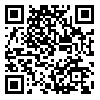Volume 81, Issue 10 (January 2024)
Tehran Univ Med J 2024, 81(10): 793-805 |
Back to browse issues page
Download citation:
BibTeX | RIS | EndNote | Medlars | ProCite | Reference Manager | RefWorks
Send citation to:



BibTeX | RIS | EndNote | Medlars | ProCite | Reference Manager | RefWorks
Send citation to:
Nikseresht M, Dabidi Roshan V, Nasiri K. The impact of high-intensity interval training (HIIT) combined with berberine supplementation on hematological parameters in middle-aged men with pre-diabetes: a randomized controlled trial. Tehran Univ Med J 2024; 81 (10) :793-805
URL: http://tumj.tums.ac.ir/article-1-12844-en.html
URL: http://tumj.tums.ac.ir/article-1-12844-en.html
1- Department of Exercise Physiology, Faculty of Sport Sciences, University of Mazandaran, Babolsar, Iran.
2- Department of Exercise Physiology, Faculty of Sport Sciences, University of Mazandaran, Babolsar, Iran.| Department of Exercise Physiology, Faculty of Sport Sciences, Athletic Performance and Health Research Centre, University of Mazandaran, Babolsar, Iran. ,v.dabidi@umz.ac.ir
2- Department of Exercise Physiology, Faculty of Sport Sciences, University of Mazandaran, Babolsar, Iran.| Department of Exercise Physiology, Faculty of Sport Sciences, Athletic Performance and Health Research Centre, University of Mazandaran, Babolsar, Iran. ,
Abstract: (569 Views)
Background: Exercise programs can lead to different physiological adaptations, but the effects of low-volume, low-frequency HIIT protocols with varying interval structures have not been thoroughly investigated. This study aimed to explore the impact of HIIT with high compression (HC) and low compression (LC), with or without berberine (BBR) supplementation, on hematological parameters in pre-diabetic men.
Methods: This semi-experimental study was conducted between October and December 2021 at Mazandaran University. Fifty-four overweight/obese men with a mean age of 48.6±6.6 years, a body mass index of 30.7±7.3 kg/m², and a body fat percentage of 34.4±4.3% were randomly and equally divided into one of six groups: HC, LC, HC+BBR, LC+BBR, BBR, and control. The HC group (2:1 work-to-rest ratio) and LC group (1:1 work-to-rest ratio) underwent training programs comprising 2-4 sets of 8 exercises at an intensity of 80-95% of their maximum heart rate twice a week for 8 weeks. Hematological responses to Bruce's incremental exercise test were measured before and after the intervention. Data were analyzed using a two-way ANOVA with Bonferroni's post hoc test, with a significance level set at P<0.05.
Methods: This semi-experimental study was conducted between October and December 2021 at Mazandaran University. Fifty-four overweight/obese men with a mean age of 48.6±6.6 years, a body mass index of 30.7±7.3 kg/m², and a body fat percentage of 34.4±4.3% were randomly and equally divided into one of six groups: HC, LC, HC+BBR, LC+BBR, BBR, and control. The HC group (2:1 work-to-rest ratio) and LC group (1:1 work-to-rest ratio) underwent training programs comprising 2-4 sets of 8 exercises at an intensity of 80-95% of their maximum heart rate twice a week for 8 weeks. Hematological responses to Bruce's incremental exercise test were measured before and after the intervention. Data were analyzed using a two-way ANOVA with Bonferroni's post hoc test, with a significance level set at P<0.05.
|
Results: Baseline hematological indices showed no significant differences between pre-diabetic and non-diabetic groups (all, P>0.05). Following the 8-week intervention, there were significant decreases in white blood cells (WBCs) in the LC and LC+BBR groups, and in lymphocytes across all intervention groups except BBR (all, P<0.05). Additionally, hemoglobin and hematocrit levels showed significant reductions in the HC and HC+BBR groups (both, P<0.05). However, in response to Bruce's incremental exercise test, a significant decrease in WBCs was observed in the LC and LC+BBR groups, with reductions of 18% and 25%, respectively (both, P<0.05).
Conclusion: The LC protocol, even without berberine supplementation, seems to provide better immunological benefits and result in less hemolysis compared to the HC protocol, as evidenced by reductions in white blood cell counts. |
Type of Study: Original Article |
Send email to the article author
| Rights and permissions | |
 |
This work is licensed under a Creative Commons Attribution-NonCommercial 4.0 International License. |





